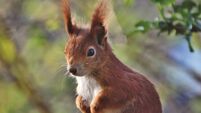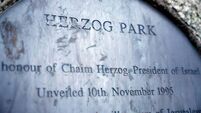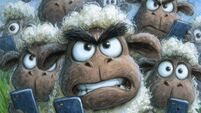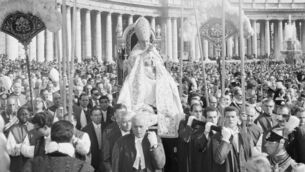There is much to know about the cup of tea
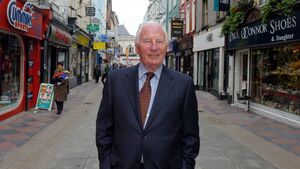
In 1960, Cork man Peter Barr pioneered the concept of wholesaling tea and began sourcing tea from East Africa. Picture: Maurice O'Mahony
There are few things more part of our identity than the cup of tea. In days of yore in the Ox Mountains, if a house had tea and sugar, there seemed little else could go wrong. The cup of tea served as everything from a cure for shock to an unrivalled thirst quencher to a way of spending time with a good friend.
Funnily enough, tea is not such an Irish thing at all and stems from a time when we were part of the British Empire. Like many of our traditions, tea remained an ‘old faithful’ long after the British had departed.
The UK Tea and Infusion Association provides lots of information about tea and one of the first thing they tell us is that over 75 million cups of tea are consumed each day in the UK. Given our one in 10 ratios to all things UK related, and given that we are recognised as the world’s greatest tea drinkers, our daily intake is more likely in the region of eight million cups. One way or another, that’s an awful lot of tea and begs the question, where did it all begin? The aforementioned Tea Association takes us right back to that first day. It seems it all started in China.
It is difficult to say whether there is any truth in this story, but tea drinking certainly became established in China many centuries before it had even been heard of in Europe. Containers for tea have been found in tombs dating from 206BC to 220AD. However, by 1000AD, tea became firmly established as the national drink of China
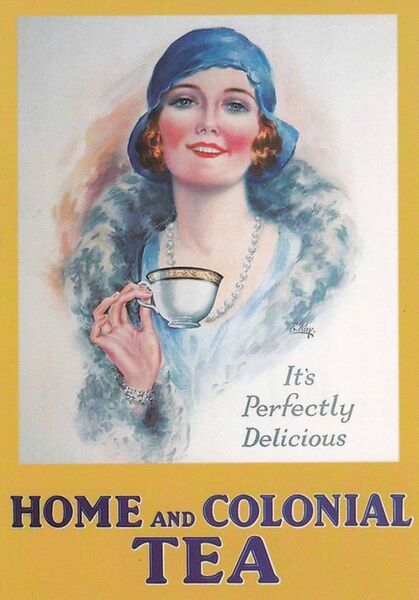
In the second half of the 16th century, there are the first brief mentions of tea as a drink among Europeans. These are mostly from Portuguese who were living in Asia as traders and missionaries. However, it was not the Portuguese who were the first to ship tea commercially; this was done by the Dutch.
By the turn of that century, the Dutch had established a trading post on the island of Java, and it was via Java that in 1606 the first consignment of tea was shipped from China to Holland. Tea soon became a fashionable drink among the Dutch, and from there spread to other countries in continental Europe. Interestingly, because of its high price at that time it remained a drink for the wealthy.
Britain always maintained an independent stance when it came to sampling new trends. Since 1600, the British East India Company had a monopoly on importing goods from outside Europe, and it is likely that sailors on these ships brought the first tea to Britain. According to The UK Tea & Infusion Association, it wasn’t until the late 17th century that tea had its first mention in Britain.
It was the marriage of Charles II to Catherine of Braganza that would prove to be a turning point in the history of tea in Britain. Catherine was a Portuguese princess, and a tea addict. It was her love of the drink that established tea as a fashionable beverage, first at court, and then among the wealthy classes. The East India Company took full advantage of this and began to import tea into Britain, its first order being placed in 1664.
It is fair to assume, Ireland being part of the British Empire at the time, that the taste for tea arrived in Ireland in the early 18th century. eventually the fashion for this eastern pick-me-up filtered down from the upper classes to ordinary rural people. This trend was also assisted by the reduction in price that popularity, and a larger market, always brings.
A century and a half later, Irish people were deprived of tea because of the difficulties experienced in importing tea during the war years. When war broke out the British government were forced to limit the amount of tea Irish merchants could buy, which led the Irish to go directly to the source for their supplies.
The Irish taste for tea then took a different route to the British. We tend to drink our tea with lots of milk, as a result this requires a very strong tea, so strong in fact that it is said a fork could stand upright in a cup of proper Irish tea. Later again, after 1945, the Irish started importing tea from Kenya which provided this stronger tea.
Lyons Tea, not an original Irish company, is a brand belonging to Liptons Teas. It is now one of the two dominant tea brands in the market within the Republic of Ireland, along with Barry's Tea.
Lyons Tea was first produced by J. Lyons and Co., a catering empire created and built by Salmons & Glucksteins, a German-Jewish immigrant family based in London. Starting in 1904, J. Lyons began selling packaged tea through its network of teashops. Soon after, they began selling their own brand Lyons Tea through retailers in the UK, Ireland and around the world. In 1921, they moved their tea factory to Greenford, west London. At that time, this factory was the largest tea factory in Europe.
Barry’s Tea was founded in 1901 by James J. Barry, grandfather of former Irish politician, Peter Barry. In 1934, Anthony Barry was awarded the Empire Cup for tea blending, confirming his expertise in the tea trade. Until the 1960s, Barry’s teas were sourced mostly from India and Sri Lanka and were sold mainly from their shop in Cork. When their blends kept growing in popularity, they widened their wholesaling and distribution, expanding to the rest of the country. In 1960, Peter Barry, Anthony’s son, pioneered the concept of wholesaling tea and began sourcing tea from East Africa.
I never thought, in starting this article, that there was so much more to know about tea; who it’s grown, where it comes from and how, in the humblest cottages of the Ox Mountains, we came to enjoy it so much. There is the story of the great tea plantations and how tea is processed. There are the health benefits of tea and there are the endless varieties that are blended to give us that familiar taste that we now call 'Irish Tea'. And we have yet to find out how to brew the perfect cup of tea.
More next week - we might even have tea on the bog.
